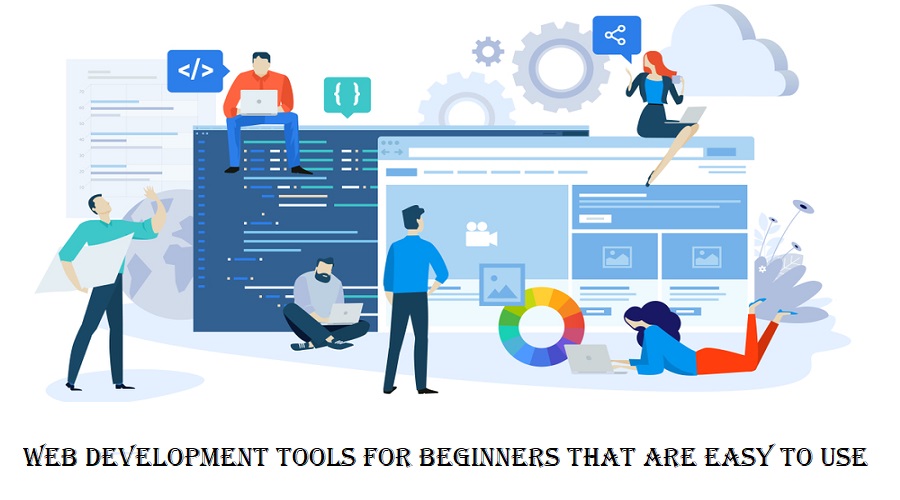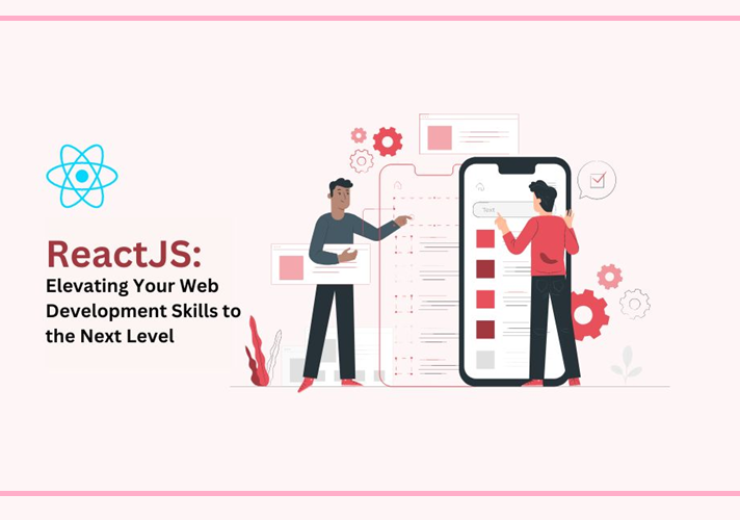Web Development Tools for Beginners That Are Easy to Use

Web developers are responsible for creating reliable websites and apps. This requires coding, as well as server management and bug fixing, which are both labor-intensive and time-consuming tasks.
However, with the help of web development tools, efficiency may be maintained without impacting functionality. Many of these web design and development tools also provide automation and security functions that can be used to improve the performance of websites and web-based programs.
Though, with so many options constantly being introduced, it might be challenging to narrow down the top web development tools for beginners. In this post, we will present a list of the best web development tools that are currently available in the marketplace.
1. HubSpot CMS
—————————-
When it comes to creating, editing and publishing content for your website, the HubSpot CMS (Content Management System) is an excellent option. It gives you access to a variety of tools and services, such as design templates and options, search engine optimization (SEO) tools, and interfaces with other marketing and sales tools, to assist you in developing and maintaining a professional website of high-quality.
HubSpot CMS is great because it is simple and straightforward to use, especially for individuals with no prior experience with content management systems. The visual, drag-and-drop editor makes it possible to design and modify websites without learning any code. To help you get your site up and running quickly, HubSpot CMS also provides a number of customizable, pre-made themes and templates.
2. Visual Studio Code
—————————-
Microsoft’s Visual Studio Code, usually referred to as VS Code, is a code editor that is both open-source and free to use. Its functionality can be expanded through the use of a variety of paid and open-source packages and extensions available in its marketplace, and its basic code editor can be customized to meet specific requirements.
Even though a lot of people try to avoid coding out of concern that they won’t be able to do it properly, understanding how to make direct changes to code is a talent that can come in handy at some time during the process of designing a website.
If you want to add new features to your website without starting from scratch, this is a great way to go. Having a dedicated platform, like Visual Studio Code, to complete your job can help lighten the load.
3. Sublime Text
—————————-
There are many different text editors available, but Sublime Text is, without a doubt, the best one. Despite the fact that it is lacking in some of the more advanced capabilities that are offered by competing platforms, it more than makes up for this shortcoming with its beautiful design and user-friendly interface.
Because of its beautiful design, ease of use, and abundance of useful tools (like the Command Palette, which you won’t want to live without), working with it is a delight.
The auto-completion feature, which takes the current context into account, is one of the most useful functions. It provides you with code suggestions as you type to help you get things done faster. Due to its many useful features, such as its reworked Python API, syntactic definitions, and blazingly quick startup times, it is difficult to offer an alternative to Sublime Text.
4. Chrome DevTools
—————————-
Chrome is still extensively used as a browser, and the built-in Developer Tools that it provides can assist you with any web design or development task you could have. Methods for enhancing page load times, fixing bugs in JavaScript, styling HTML elements, and displaying notifications about the page’s execution status are also included.
The Google Chrome developer tools are quite useful, but it is crucial to keep in mind that they are only compatible with the Chrome web browser. They are not compatible with any other browser, not even browsers that are based on the Chromium engine.
You can get started with the Chrome Developer Tools right away for no cost, and if you run into any issues, there is a large and helpful community of other users ready to assist you.
5. CodeCharge Studio
—————————-
There is no alternative to CodeCharge Studio that is preferable when it comes to swiftly prototyping and implementing database-driven web apps. When compared to other online development tools, CodeCharge Studio stands out for its interoperability with a wide variety of databases, web servers, and web technologies.
CodeCharge Studio’s Application Builder is the most powerful tool available to a web development company for automating the web development process. Users can quickly and easily create complex web applications with database support, complete with dozens or even hundreds of web pages for managing and controlling data.
With the help of master pages, you can make sure that all of the pages in your app are formatted and designed in the same way. Rather than spending time manually coding each page in your project, you can save time and effort by instead building a “master page” and then copying its layout and formatting for each of the other pages. In response to a user’s request for a content page, a hybrid document is generated that incorporates design elements from both the master page and the requested page.
6. Atom
—————————-
Atom, created by GitHub, is a free, open-source text/code editor that is compatible with macOS, Linux, and Windows. It has a built-in version of Git Control and is compatible with JavaScript add-ons.
It’s widely used by developers and may be tweaked to meet specific needs without requiring changes to the configuration file. As an added bonus to its cross-platform editing and clever autocomplete features, it also helps to speed up the coding process.
A single file, an entire project, or many projects can all be accessed at once, making navigation a breeze. It has a package manager already integrated, which makes it easy to find software, set up new installations, upgrade existing ones, and uninstall unwanted ones.
7. TypeScript
—————————-
TypeScript is a computer language that extends JavaScript by including all of JavaScript’s features and a few more on top. Microsoft created it and continues to support it. TypeScript is widely used for developing enterprise-level online apps, and it is frequently used with other frameworks like Angular and React.
TypeScript’s primary value is in the type system it brings to JavaScript. There is no type checking in JavaScript until runtime, therefore variables can store anything. This can make finding issues in your code more challenging and make it more difficult to fix.
TypeScript adds a type system that allows you to specify the type of a variable when you declare it, and the compiler will check that the variable is used correctly based on its type. This can make it easier to catch errors in your code and can make it easier to maintain and update your codebase.
8. CodePen
—————————-
CodePen is one of the best tools for novice web developers because of how easy it is to pick up and use. Professionals, despite their extensive knowledge, can gain fresh insights from this web development framework.
This online coding editor supports a wide variety of programming languages, including HTML, CSS, and JavaScript. CodePen is one of the top free web development tools that could be useful for client-facing work.
You can watch the outcomes as they occur in real-time in order to speed up the process of troubleshooting your website. In addition, the thousands of publicly available pens developed by developers can be used as a source of creativity.
9. Bootstrap
—————————-
The Bootstrap framework was unveiled to the public for the first time on August 19, 2011. Bootstrap is a front-end-focused open-source framework that may be utilized in the development of websites as well as mobile applications. Using Bootstrap, it is possible to create applications and websites that function properly on both iOS and Android.
Bootstrap’s responsive utility classes are one of its most distinguishing features. Through the implementation of responsive utility classes, you will have the ability to manage when and where specific information shows or disappears depending on the screen size of the device that is being used. This is a fantastic choice for developers who wish to optimize their site for use on mobile devices and tablets.
The site’s responsive features include a drop-down menu of its elements. Most plugins for websites are developed in Java, and testing them all might take a long time. However, with Bootstrap and its simple personalization options, developers may speed through the process.
10. jQuery
—————————-
jQuery is a JavaScript library that makes it easier to work with DOM elements (elements on a web page) and perform common tasks in JavaScript. It provides a collection of methods for performing tasks including modifying page components, sending HTTP requests, and responding to events (such as clicks or hover events). jQuery simplifies many otherwise difficult JavaScript tasks, making it ideal for new developers.
To a large extent, jQuery has cornered the market as the most widely used and adaptable JavaScript library. Even though there have been significant advancements in the frontend space with JavaScript frameworks and the fetch API, jQuery may still have useful uses depending on the nature of your project.
Conclusion
Even the most complex online applications can now be built rapidly and without much hassle thanks to today’s web development technologies. These mobile web development tools allow you to streamline your processes at any time by scripting repetitive tasks and automating repetitive procedures. Most of these web design resources are also freely available, which greatly expands their user base.




